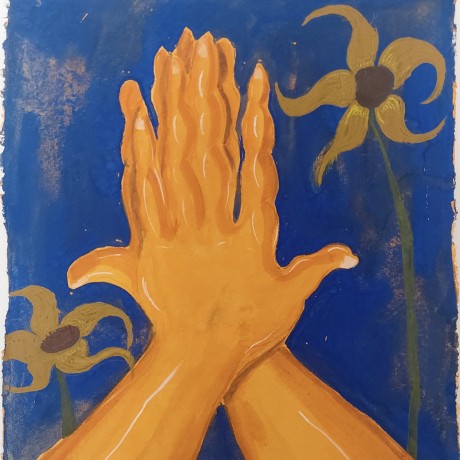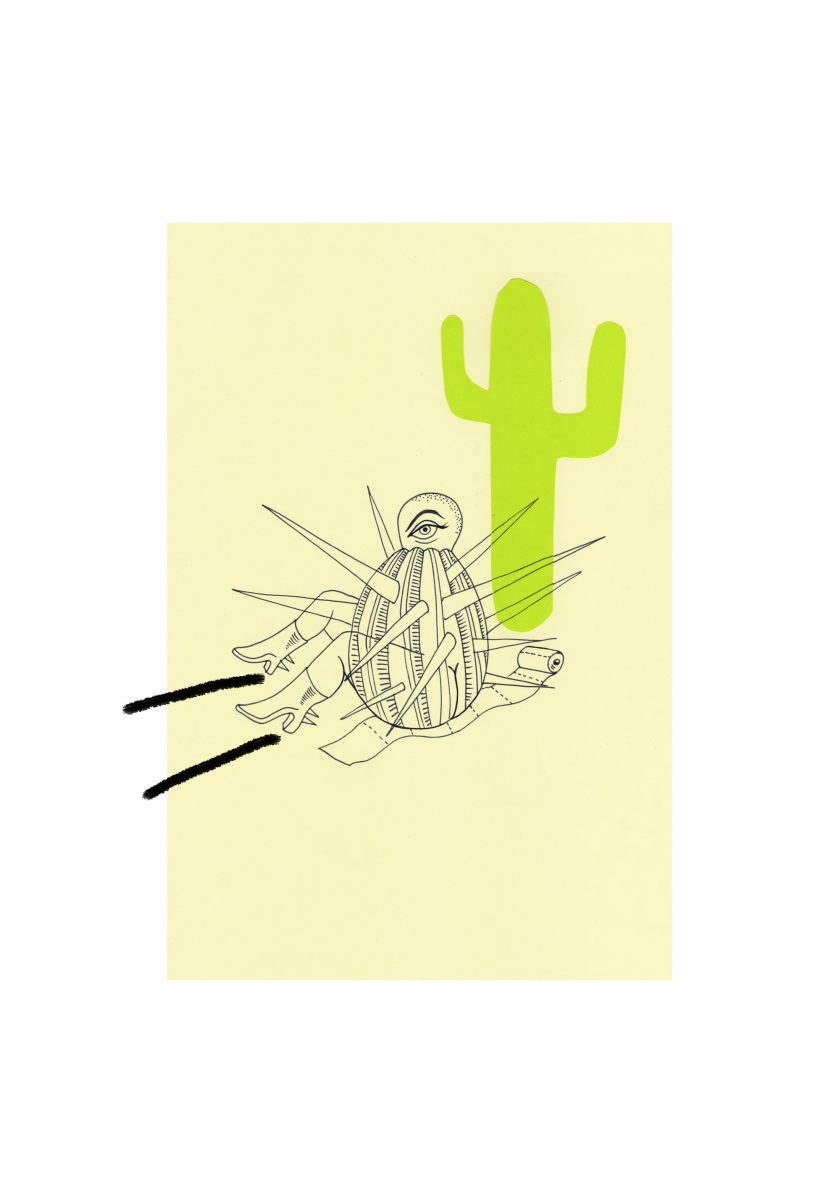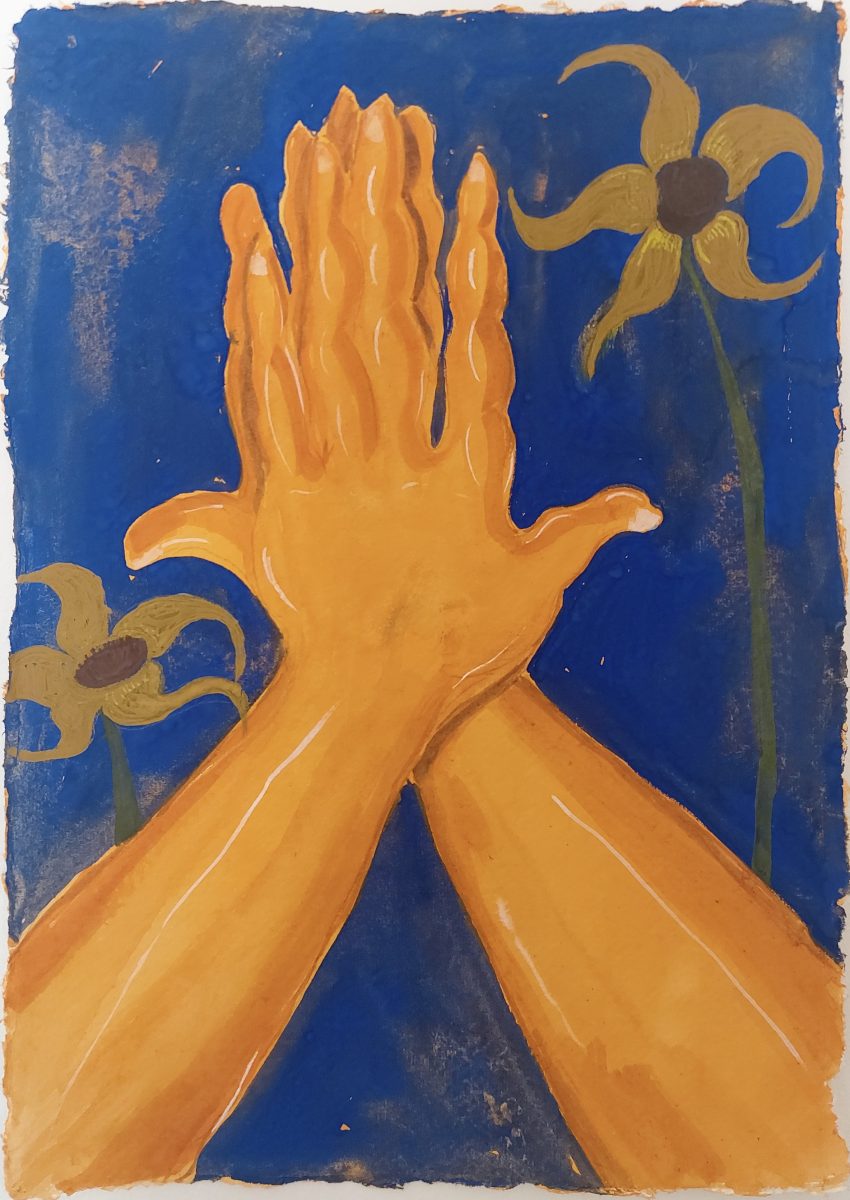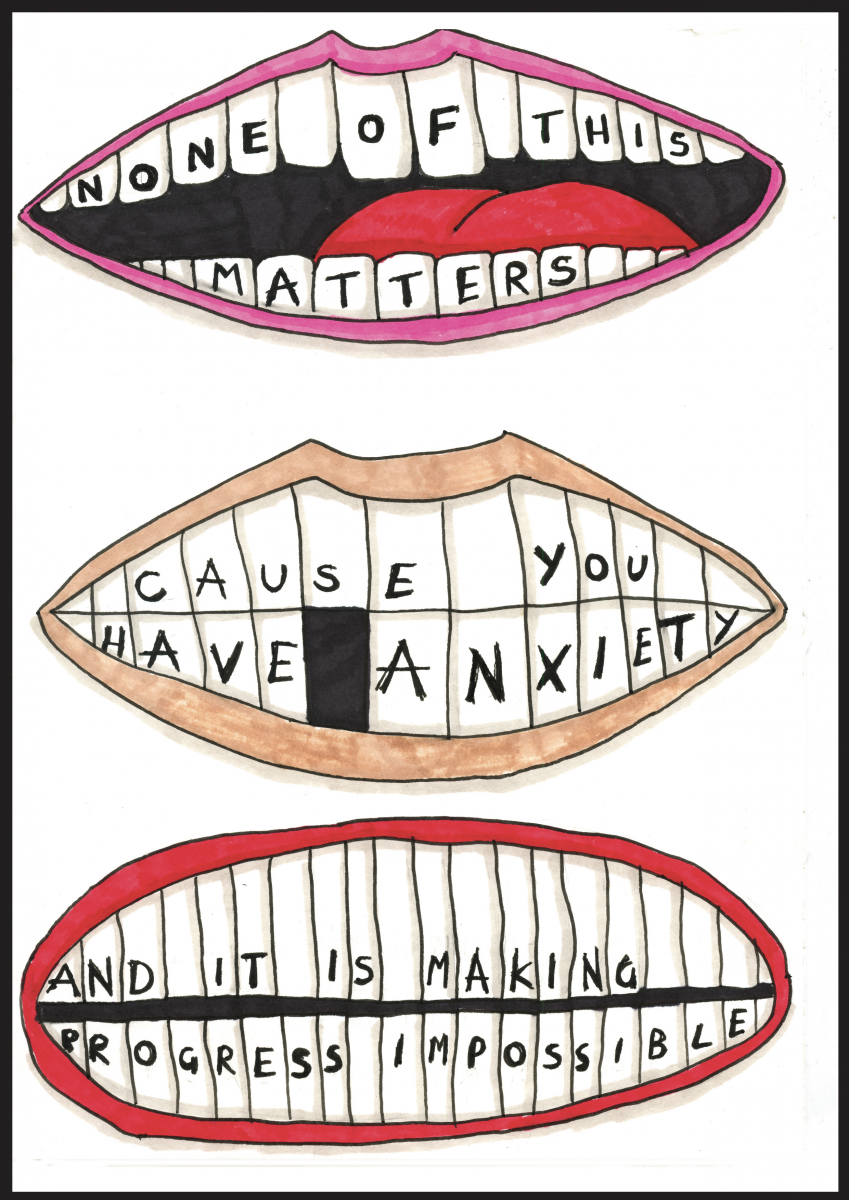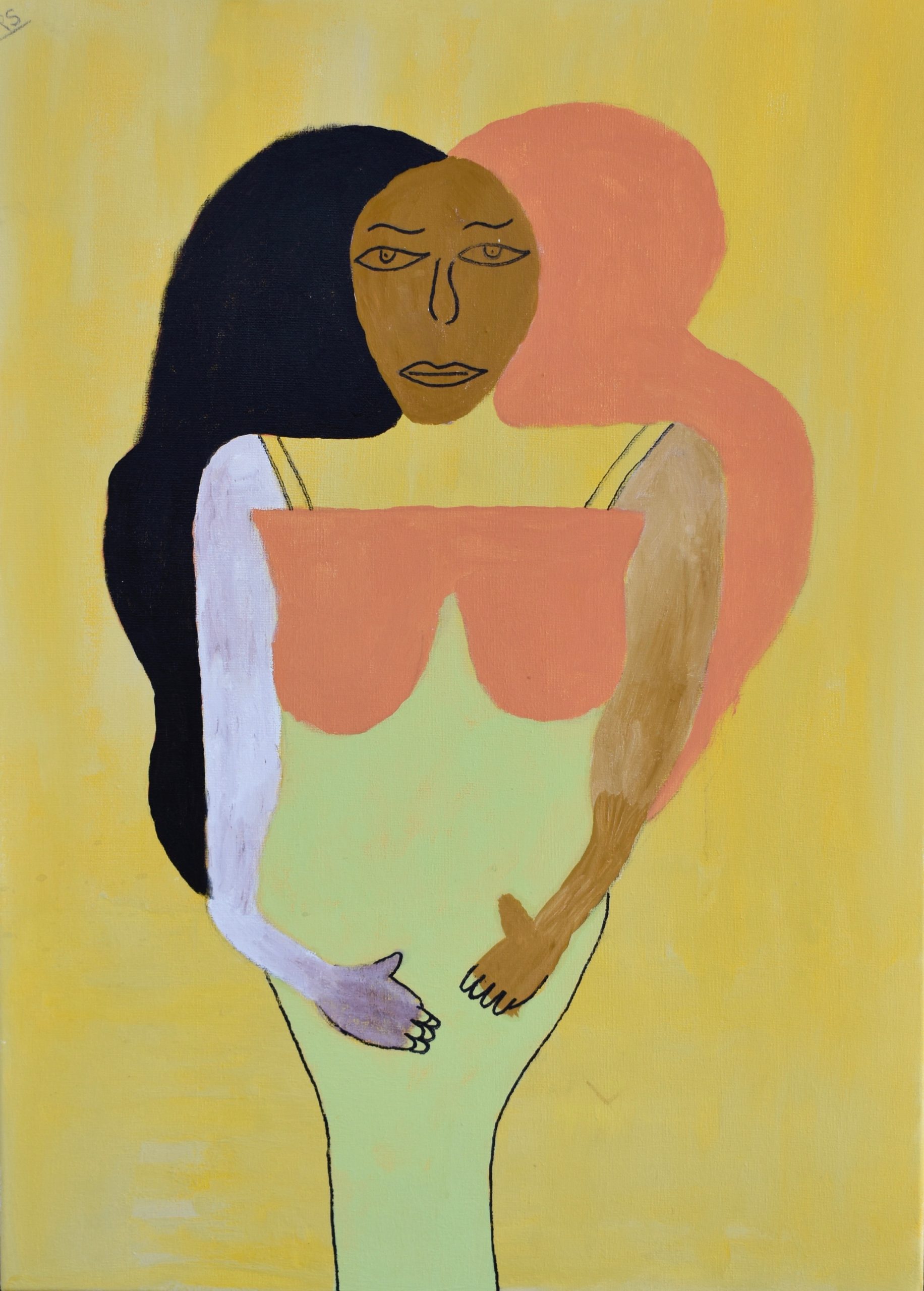
The idea that the pandemic would be a levelling and therefore uniting experience spread widely in 2020. It was a claim that unravelled under scrutiny in the UK, however, and we now know that individual experience of the pandemic is largely defined along intersections of gender, race, wealth, class, and disability.
Various anti-lockdown, anti-mask, and anti-vaccination drives have revealed the intense discomfort that some feel with the idea that we are all connected, that those with the most privilege should temper their own freedoms in solidarity with those who face the greatest risk.
Shape Arts interrogates these ideas in All Bound Together? An organisation that works to improve access to culture for disabled people by providing opportunities for disabled artists, Shape’s annual exhibition normally functions as an open call, but this year they instead commissioned artists to make work along the exhibition’s themes.
“We reflected on our responsibility to take on the work of seeking out artists, rather than adding another competition that for many ends in rejection,” explains, Elinor Hayes, the show’s curator. “After the year we’ve had, it didn’t seem like the right way to go.”
- Left: Sarah Yu Zeebroek, Quarantine drawings, 2020
- Right: Akissi Nzambi, But You Don’t Look Sick, 2021
However, the idea of being “bound together” carries great hope, calling to mind a world that values fellowship above individualism. Many of us are drawn to the contemporary art world as a place of radical permission for such ideas, somewhere to act up and act out, where hidden issues can be exposed, blown up, and worked through.
But rather than offering freedom from the usual boring constraints, many disabled creators experience the art world as a deeply conservative and risk-averse space, somewhere which often entrenches existing contours of social inequality. So why is our imagination still so limited when it comes to the presentation of work by disabled artists?
“We need disabled writers commissioned to review exhibitions, and we need disabled audiences to be made welcome”
Artist and consultant Sonia Boué integrates her own experience to inform her practice around neurodiverse inclusion and leadership in the arts. Boué received her autism diagnosis relatively late in life, and her exploration of neurotypical dominance in the art world became enmeshed in her practice. In a recent article for Autograph Gallery’s online blog, she argues “removing the lens of ‘supported work’ is vital if we are to dismantle a cultural hegemony which still allows intellectual ableism. Visual literacy is assumed in our sector, but do we really know how to read works beyond a narrow spectrum of lived experience?”
Boué is one of many disabled artists deconstructing a fundamental prejudice in the art world, which reproduces discrimination against disabled people and sees their art practice as having only therapeutic merit, discounting its aesthetic or critical values.
“For autistic artists, making our work is often how we make relationships with the world,” she says. “I don’t think we are honest about the contexts that most art is produced within, and we should turn our attention to this urgently.”
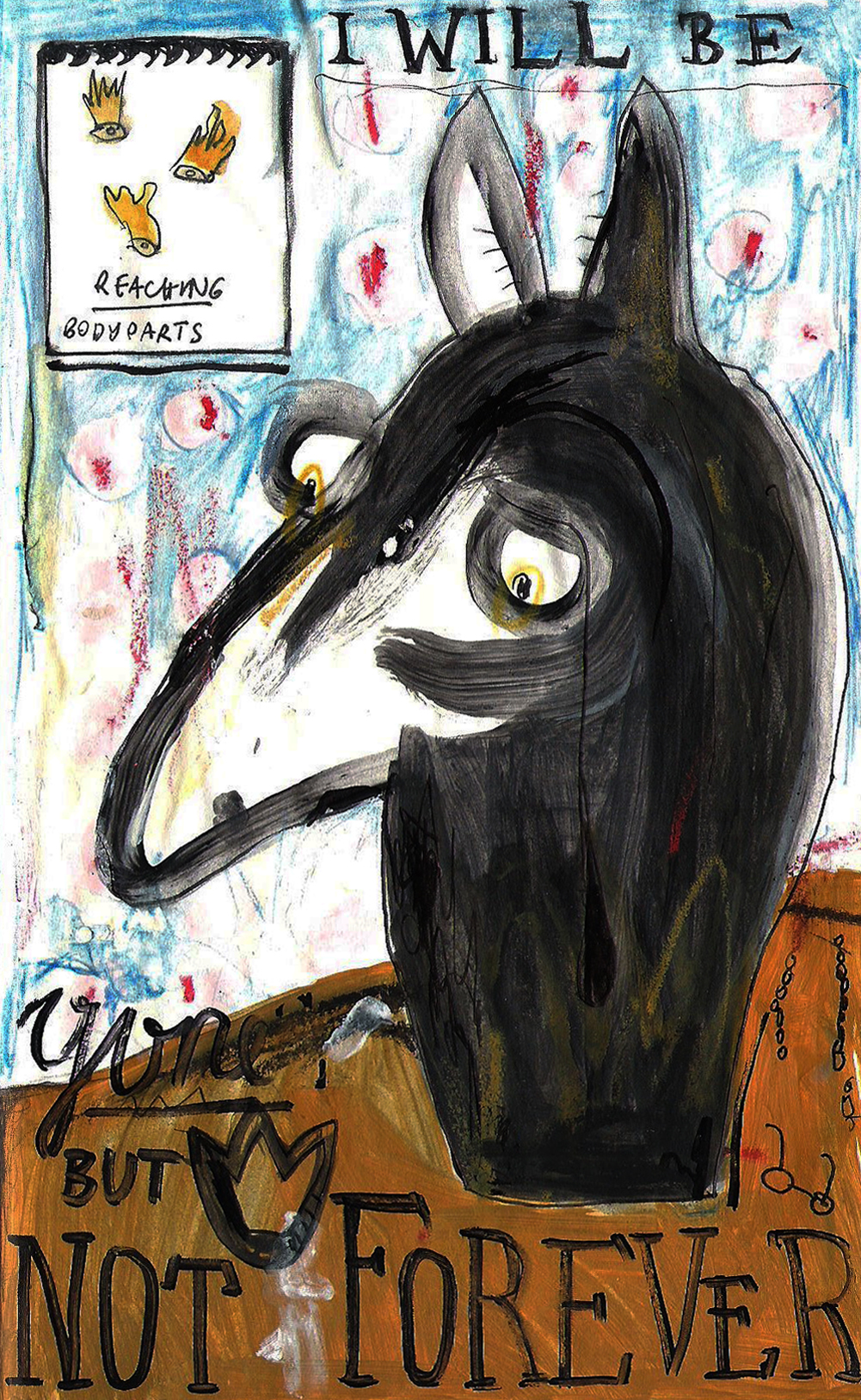
Boué’s comment about supported environments points towards a fundamental hypocrisy in attitudes towards collectivism in the art world. We accept that many celebrated, non-disabled artists work with the support of dozens of staff, and have no problem attributing the creative merit of the work to that single artist. Many disabled artists produce work made with far less substantial levels of support, and yet this is often seen to diminish their creative agency.
Five collectives were nominated for this year’s Turner Prize, including Project Artworks, a collective of neurodiverse artists and makers based in Hastings. Hopefully this might signal a turn towards an appreciation of work made in supported environments.
“It’s problematic that you mostly encounter disabled artists in education or public programmes, rather than exhibition spaces”
Billy Mann, an artist and member of Submit to Love Studios, is based at Headway East London, an organisation that provides support to survivors of brain injury. Mann previously worked as a production editor at The Guardian, and like many artists at Submit to Love, his creative practice became an integral means of exploring his altered identity after brain injury.
“Since I became disabled, I gained awareness about the difficulties of living in a world made for able-bodied people,” Mann says. “I constantly anticipate trouble in my everyday life and I’m always in a position where I have to ask for help, but the studio is a non-hierarchical space.”
“For autistic artists, making our work is often how we make relationships with the world”
While there are positive changes occurring in the art world, we are still a long way from true equity for disabled artists and art workers. Abi Palmer, an artist featured in All Bound Together?, explains the problems she has faced working with institutions. “You can make it through an art school education without paying any attention to accessibility,” she says.
Palmer finds that it is mainly education departments where institutional knowledge about access and inclusion is housed, and where commissions are usually proposed. “The moment you frame art as an educational experience, it ceases to function as art,” she believes. “So it’s incredibly problematic that the place you will mostly encounter disabled artists is in education or public programmes, rather than exhibition spaces.”

She also faces the expectation that she must speak to deeply personal experiences of ableism and disability. “Almost always, an interviewer’s first question is about how my body functions, rather than how my work functions,” she explains. “There is always the implication that the work I am making is for an able-bodied audience, and that it is inherently my responsibility to educate them.”
Her Shape commission, All the Worlds You’ll Never See, extends ideas that she has previously worked with around choice, randomness and luxury, through a film where she presents foraged gifts of plants and flowers to her indoor cats. The film explores the cats’ agency or lack thereof, and their vulnerability to any harm she may unwittingly commit.
“Many disabled creators experience the art world as a deeply conservative and risk-averse space”
As such, the work can be read as a parable about access, where Palmer becomes the uneasy occupier of a ‘benefactor’ role, with the cats in receipt of a highly curated experience that only mimic the reality of being outside, and whose terms are controlled by Palmer.
She taps into a particular queasiness around inclusion in the art world, a worry that making things accessible means making them ugly, and a fear of ‘getting things wrong’ that almost certainly arises when the workplace itself does not contain disabled staff. In the UK, more than 20% of adults are disabled, as opposed to only 6% of art workers.
An individual (who wishes to remain anonymous) working in communications at a national art institution expresses frustration at the current state of affairs. “I want to see organisations take action that they can’t put on a press release,” they say, going on to describe being confronted by audience discrimination in the reception of disabled narratives on social media.
“If I put out an Instagram story that shows a disabled artist or subject, the post always performs poorly compared to our other content,” they explain.“However, if the caption is focused on how they overcame their disability, we get a more positive reaction. If the disability is shown as just one part of an individual’s complex story, the reaction from audiences is markedly lower.”
This professional experience quantifies the limitations that disabled artists often describe: that recipients of their work are resistant to nuance and more comfortable with a retelling of the same stories about disabled lives.
Low pay, precarious contracts and an endemic lack of pastoral support make the art world inaccessible for disabled workers, but we urgently need disabled curators, disabled directors, and disabled front-of-house staff. We need disabled writers commissioned to review exhibitions, and we need disabled audiences to be made welcome. This is not about meeting criteria and ticking boxes, it’s about finally creating the generous, plural and radical art world that many of us want and need.
Siobhán Forshaw is the curator of community programmes at the Whitechapel Gallery
